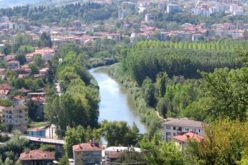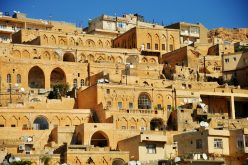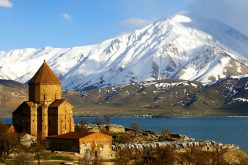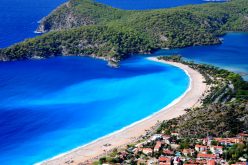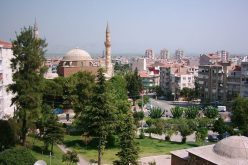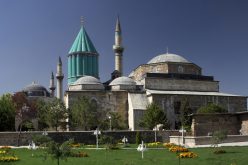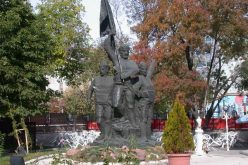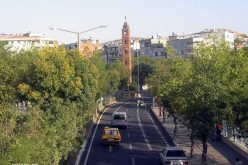Karaman
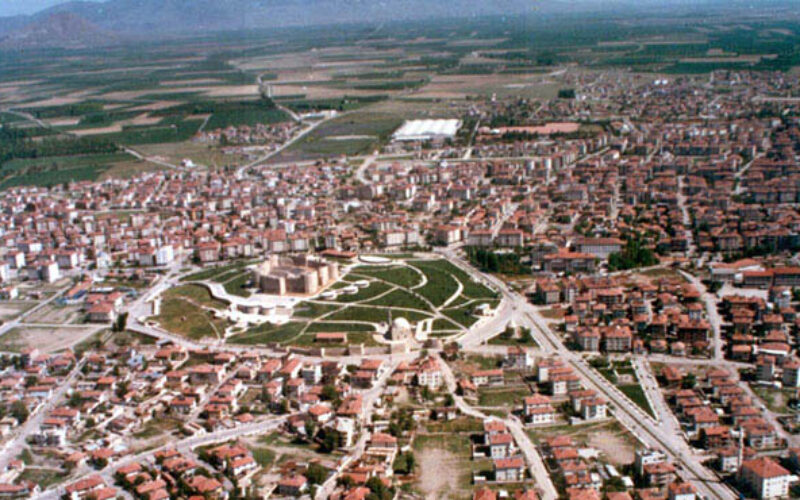
Karaman
Karaman, the province of Karaman is located to the south of the Central Anatolian Region and is between Konya – Mersin – Antalya provinces in Turkey. The province is a major commerce, culture and art center. Karaman province and its vicinity is known to be inhabited from the beginning of BC 8000 and inhabited from the beginning of BC 8000 and the region charms and fascinates the visitors with the touristic beauties as underground cities, caves, religious centers and also with natural beauties as plateaus and other natural flora and fauna, rich hand crafted art works.
In ancient times Karaman was known as Laranda. It was destroyed by Perdiccas in about 322 BC and later became a seat of Isaurian pirates. It belonged to the Roman and later Byzantine Empire until it was captured by the Seljuks in the early 12th century. Karaman was occupied by Frederick Barbarossa in 1190 . In 1256, the town was taken by the Turkish bey Karamanoglu Mehmet Bey and was renamed Karaman in his honour. From 1275, Karaman was the capital of the Karaman Beylik (and later Ottoman province) of Karamanid.
In 1468 Karamanid was conquered by the Ottomans and in 1483 the capital of the province was moved to Konya. Karaman has retained ruins of a Karamanid castle and some walls, two mosques and a Koran school (madrasah) from that age. An exquisite mihrab from a mosque from Karaman can now be found in the Cinili Pavilion near the Archeology Museum in Istanbul.
The poet Yunus Emre (c. 1238-1320) resided in Karaman during his later years and is believed to lie buried beside the Yunus Emre Mosque. A small adjacent park is adorned with quotations from his verse, many of them unfortunately graffiti-splattered. In 1222, the Sufi preacher Bahaeddin Veled arrived in town with his family, and the Karamanoglu Emir built a medrese to accommodate them. Veled’s son was the famous Mevlana Jelaluddin Rumi, who married his wife, Gevher Hatun, while his family was living in Karaman. It was here, too, that Rumi’s mother died in 1224. She was buried, along with other family members, in the Aktekke Mosque (also known as the Mader-i Mevlana Cami), which Alaeddin Ali Bey had built to replace the original medrese in 1370.
Places to Visit ;
Mosques and Churches
Aktekke Mosque (Mader-i Mevlana Mosque) The mosque is located at the city center. It was constructed at the Karamanoglu period entirely from shear stones and has a large central dome and a high minaret. At the left side of the mosque in a separated place, the coffin tombs of Mümine Hatun, mother of Hz. Mevlana and his grandsons are present.
Yunus Emre Mosque The mosque is located at the city center and was constructed in the Karamanoglu period. The structure is central domed. Inside the mosque, the tomb of famous Turkish intellectual and thinker Mutasavvif Yunus Emre is present.
Binbir (A thousand and one) Church (Maden Sehri – Degle): The church is located to the north of the Karaman Province at 50 km. distance and at the skirts of Karadag mountain. As there are numerous ruins of churches at the vicinity of Karadag, the churches at the region is named as Binbir (A thousand and one) churches.
Derbe The church is located inside the borders of Ekinözü village which is 23 km. away from the Karaman province. The historic sources indicate that the Derbe Church is among the first churches constructed in the world. This church was constructed in the year AD 41, 13 years before the construction of the Sister Mary Church in Ephesus. The Derbe Church is stated three times in the Holy Bible of the Christians. The Christians visiting Derbe Church had become Christian Pilgrims according to their religious beliefs.
Alahan the inn is located to 40 km south of the Karaman Province. The structure was constructed in the 12th century by Seljukians.
High Plateaus
The plateaus of the province is used for pasturage purposes for the live stock of the villagers, especially in spring season. Because of their water springs, clean air, natural beauty, the convenience for pasturage for live stock and being a transition region to the Mediterranean Region, especially the plateaus at the Ermenek Region are the preferred frequent visiting places for local and foreign tourists for the purposes of trekking, local food and beverage varieties, natural mineral water and promenade areas.
Bridges
Görmel Bridge: It is one of the most beautiful works that Karamanogulları left. It is in Ermenek. The bridge, of 27 m. of height and 4.70 m. of width, is erected on two arcades and was constructed by Halil Bey, the son of Karamanoğlu Mahmut Bey.
Karaman Bridge: It is in Ayrancı district and one of the works of Karamanoglu.
Selavat Bridge: It is on Göksu river, in Göçer village, Karaman and was constructed during the period of Karamanoglu. Its height is approximately 12m and its width is 3m.
Ak Bridge: It is in Yeşildere town, on Ibrala brook stream and belongs to the period of Karamanoglu.
Castles
Karaman Castle: It is constructed by Seljuks, in 12th century and composed of ramparts one inside the other. Today, inner castle still exists and it is one of the most conspicious castles of our country.
Ermenek Castle: Castle was used as refuge, house and dungeon. Naturally, there are caves in the castle. It is the first castle of Karamanogulları and it is in the middle of a big rock covering the north of Ermenek.
Mennan Castle: It is in Ermenek and it means refuge. The castle is constructed on a perpendicular mountain with slippery rocks. When Osmanlı Gedik Ahmet Paşa got the castle from Karamanogulları with a tricky way, Pir Ahmet Bey committed a suicide in that castle.
Ilisıra Castle: It is in Imirme, Yollarbası town in Karaman and it belongs to the ancient Byzance period. The castle is composed of the ruins and is also known as LYSTRA CASTLE. There was a church around it belonging to Byzance.
Divle Castle: It is in Divle (Üc Harman) village, in Ayrancı district, Karaman. The castle is like an apartment and has many floors. The settlement is inside the caves and actively used during the periods of Seljuks, Karamanogulları and Ottomans.
Gaferiyet Kalesi: It is in Kazım Karabekir district. In the past, Gaferiyat was surrounded with a castle, but when the people began to use the stones of the castle to build their own houses, this situation gave harm to the castle. Today, it has only one entrance.
Caves of Karaman
Hışlayık Cave
Located in Ayrancı District after a 26 meter steep descend from a shaft, the underground river is reached. After a certain period of surface flow, the river disappears after a siphon. The cave continues after passing a lot of siphons.
Write a Comment
Only registered users can comment.




